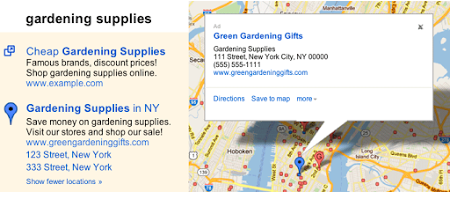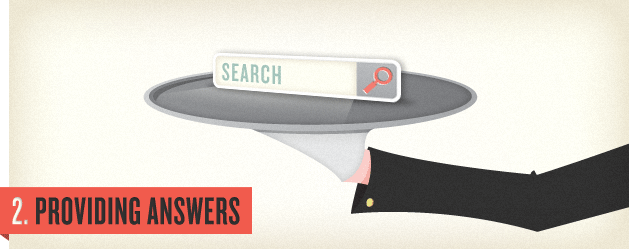After Google's
most recent local algorithm update, the rules have changed for local
SEO. Columnist Greg Gifford discusses how you can do well in local
search in 2015.
The year is almost over, and many businesses are starting to look forward to 2015 and discuss their marketing plans. Luckily,
David Mihm, the local search guru at Moz, just released his annual
Local Search Ranking Factors survey, which helps give us local marketers more insight into which ranking factors matter the most.
The survey shows a definite shift toward more traditional web ranking
factors. Last year’s Local Search Ranking Factors survey had Google
Places and Citations weighted heavily, but this year’s study shows that
on-site signals and links are the most powerful factors.
This shift is consistent with Google’s recent local ranking algorithm update,
Pigeon. Many
Local SEOs claimed they weren’t hit by Pigeon – but it’s more likely
that, because they took a more wholesome approach to local SEO, their
sites simply had more authority to begin with.
The most important point we try to hammer home to potential clients
is that you can’t fool the nerds at Google. Everything you do, both on
and off your site, should be working toward the end goal of making your
user experience awesome… not trying to fool Google into placing you
higher on search results pages.
So, taking what we’ve been able to figure out about the Pigeon update
and adding in the results from the 2014 Local Search Ranking Factors
survey, here are two simple tips to help you set the stage for Local
Search success in 2015:
- Be Awesome
- Earn Awesome Links
Yes, it’s really that simple… but at the same time, it’s really not
that easy for local businesses. Take a look at your competitors in your
vertical – nearly every website has the same or similar content, and
most sites don’t have that many inbound links.
Okay, So How Are You Supposed To Be Awesome?
The best thing you can do for Local Search success in 2015 is to take
all the energy you put into trying to fool Google and instead use that
energy to make your site better.
Take a long, hard look at your site and look at your competitors’
sites. What can you do to be better? You know that your potential
customers will be looking at multiple sites, so make
your site the
best in your vertical.
Make sure you’re avoiding these common pitfalls – they’re all basic, but we still see far too many sites tripping up on these:
- No Home Page Content. Your customers (and search
engines) need to know what you’re all about. If your home page has a
slider/banner and just a few sentences, you need to add more useful
content there immediately.
- Only A Few Sentences On A Page. Your customers (and
search engines) are checking your website for useful, relevant
information. If you offer a product or service, don’t just say, “We sell
X, call us for more information!” Today’s shoppers want
immediate information, so you need to pack every page with useful
content.
- Spamming Keywords. Far too many websites rely on
this outdated tactic. You’re not going to rank well everywhere in your
state simply because you listed out 100 cities separated by commas on
your home page. Does that huge list of cities provide useful information
for customers? No. Does it help you rank in Google? Definitely not. Get
rid of the junk and populate your site with relevant, informative
content instead.
- Awful Title Tags. You’ve got about 500 pixels of
width for your title tags; anything longer will be truncated when it’s
displayed in search results. The title tag should summarize the
page – it shouldn’t be a huge chunk of keywords you’re trying to rank
for. Put your primary keyword phrase at the beginning and your business
name at the end. If you’ve got 100 keywords stuffed into your title tag,
you just look desperate.
Don’t Forget Your Local Optimization
With on-site signals now carrying so much weight, it’s more important
than ever to have your local optimization ducks in a row. It won’t do
you any good to bang out a ton of citations if your site doesn’t include
the local signals that Google expects it to have.
Again, these are old-school basics, but we hardly see any websites correctly optimizing for local areas:
- Include City/ST in your title tag. Remember, the
title tag is incredibly important for optimization, and including your
city and state is an important signal for local relevancy.
- Include City/ST in your H1 heading. It doesn’t have to be the entire heading in and of itself — what’s important here is to include your city and state in the page heading to further show local relevancy.
- Include City/ST in your content. Far too many sites
forget to include City/ST information inside the site content.
Optimizing for local search won’t work unless you’re talking about your
local area in your content.
- Include City/ST in your alt text on images. It’s
amazing how many times we see sites that don’t include alt text.
Remember, Google can’t see what’s in your images, so alt text helps
provide a better understanding of your page content. Including City/ST
information can really help boost local relevancy.
- Include City/ST in your URL. If you’ve got the
ability to edit your URL structure, try to include your city and state
information in your URLs. Again, this can go a long way toward providing
a stronger local signal to both customers and Google. Important Note:
if you’re going to update your URLs, don’t forget to set up 301
redirects so that the old address is permanently pointed to the new one.
These are all just specific tactics to help with the main goal: to
make your site more awesome. Stop thinking about how to make your site
rank, and start thinking about how to make your site the best in your
niche.
That’s how you’re going to get your site to rank better and convert more visitors.
soucre:
SearchEngineLand.com
Greg Gifford






















